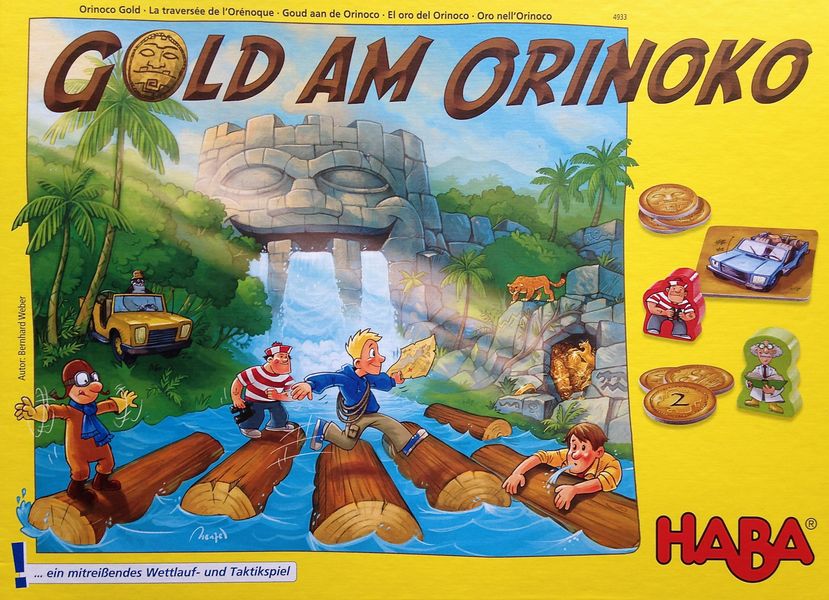Gold am Orinoko (2013) Board Game
Gold am Orinoko, released in 2013, is a children’s board game designed by Bernhard Weber and published by HABA. The game is set in the Orinoco River region of South America and follows players as they search for treasures while navigating the river.
Game Components of Gold am Orinoko
How To Setup Gold am Orinoko
To set up the game, place the game board in the middle of the playing area, representing the Orinoko River. Distribute the floating log pieces across the river section of the board. Each player chooses a token and places it at the starting point. The gold nugget tokens are also placed according to the instructions.
Gameplay Mechanics and Game Objective
Mechanics
Game Objective
Player Experience
**Gold am Orinoko** offers a fun and simple experience, making it immediately playable for children. The game teaches basic strategy and luck management through dice rolling. It’s an interactive way for kids to learn about taking turns and planning ahead.
Pros
Cons
Personal Thoughts on Gold am Orinoko
**Gold am Orinoko** is perfect for families with young children or for elementary school settings looking to introduce board games as a learning tool. It’s a great way to teach children about turn-taking, basic strategy, and a bit of luck. However, it may not appeal to older players or those seeking more complex board game experiences. Despite its simplicity, it was nominated for the Kinderspiel des Jahres 2013, highlighting its value as a children’s game.
We are supported by our audience. When you purchase through links on our site, we may earn an affiliate commission, at no extra cost for you. Learn more.

